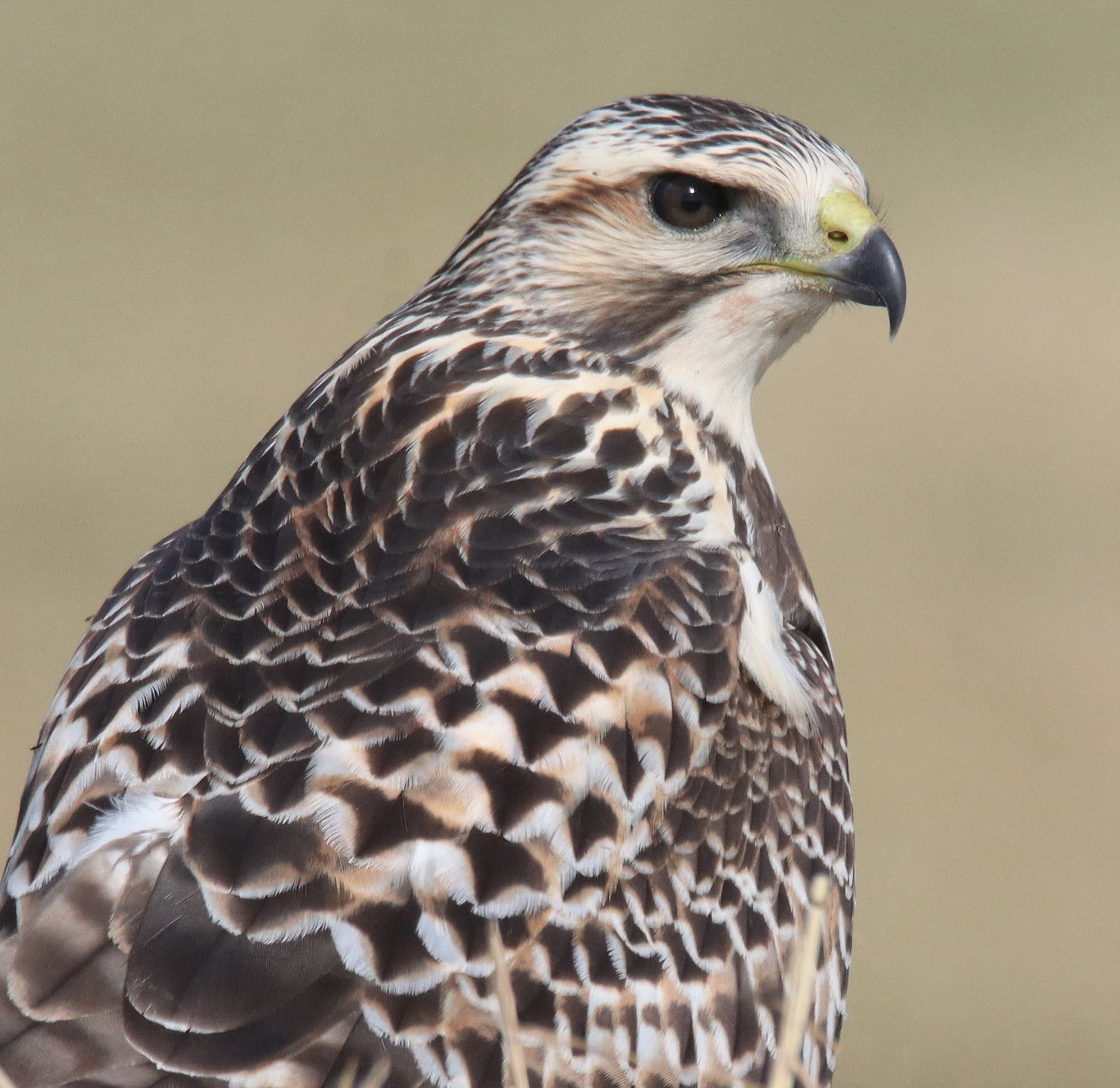
Can you identify this raptor? Sunday’s birding expedition provided close photo opportunities with 3 Swainson’s Hawks, including this beautifully colored fledgling.
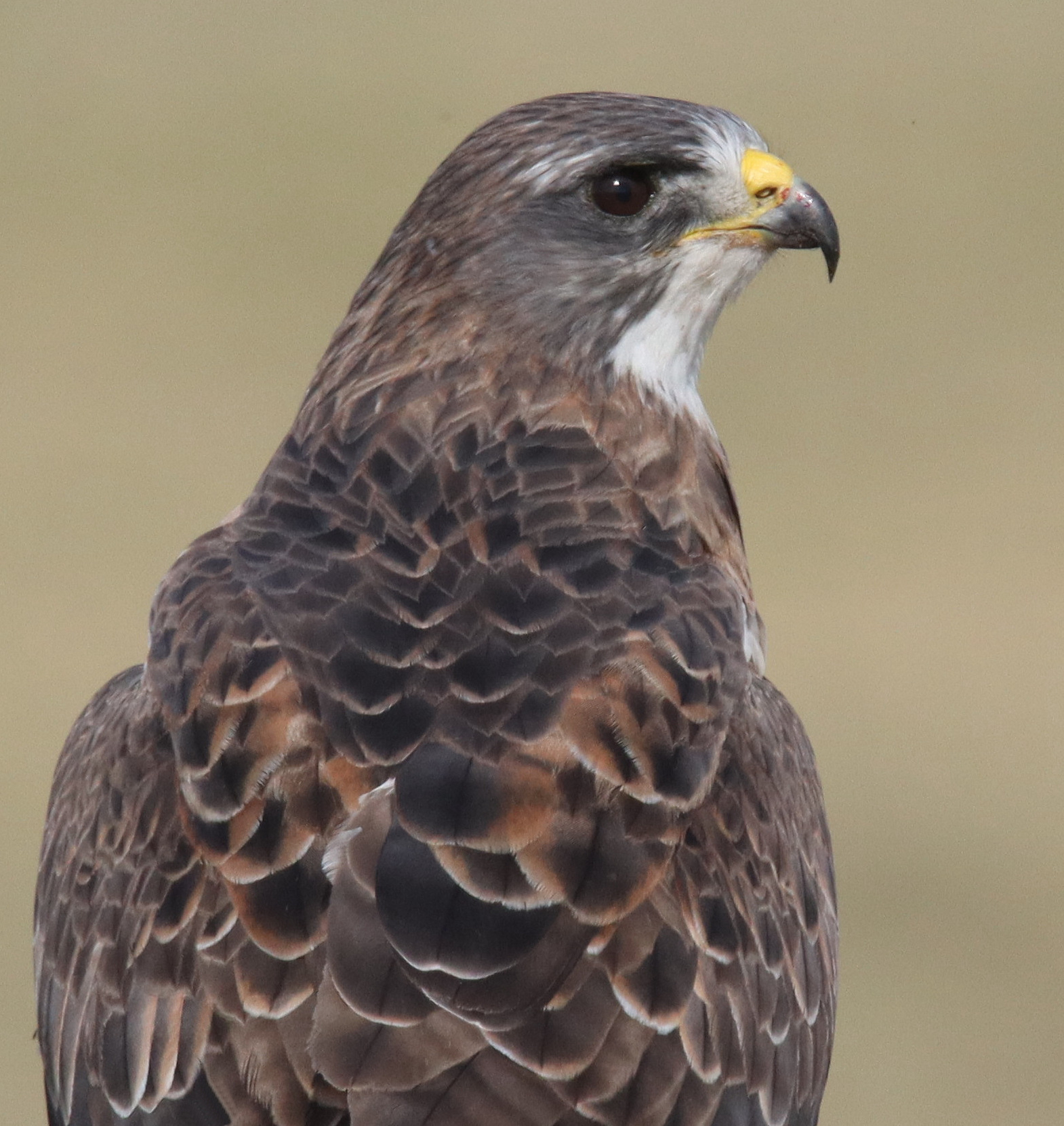
Perched near the light-colored fledgling, this adult Swainson’s Hawk shows the stark contrast between the adult and its fledgling from the backside.

The first Sunday Swainson’s Hawk showed rufous belly plumage and details of its breast feathers.
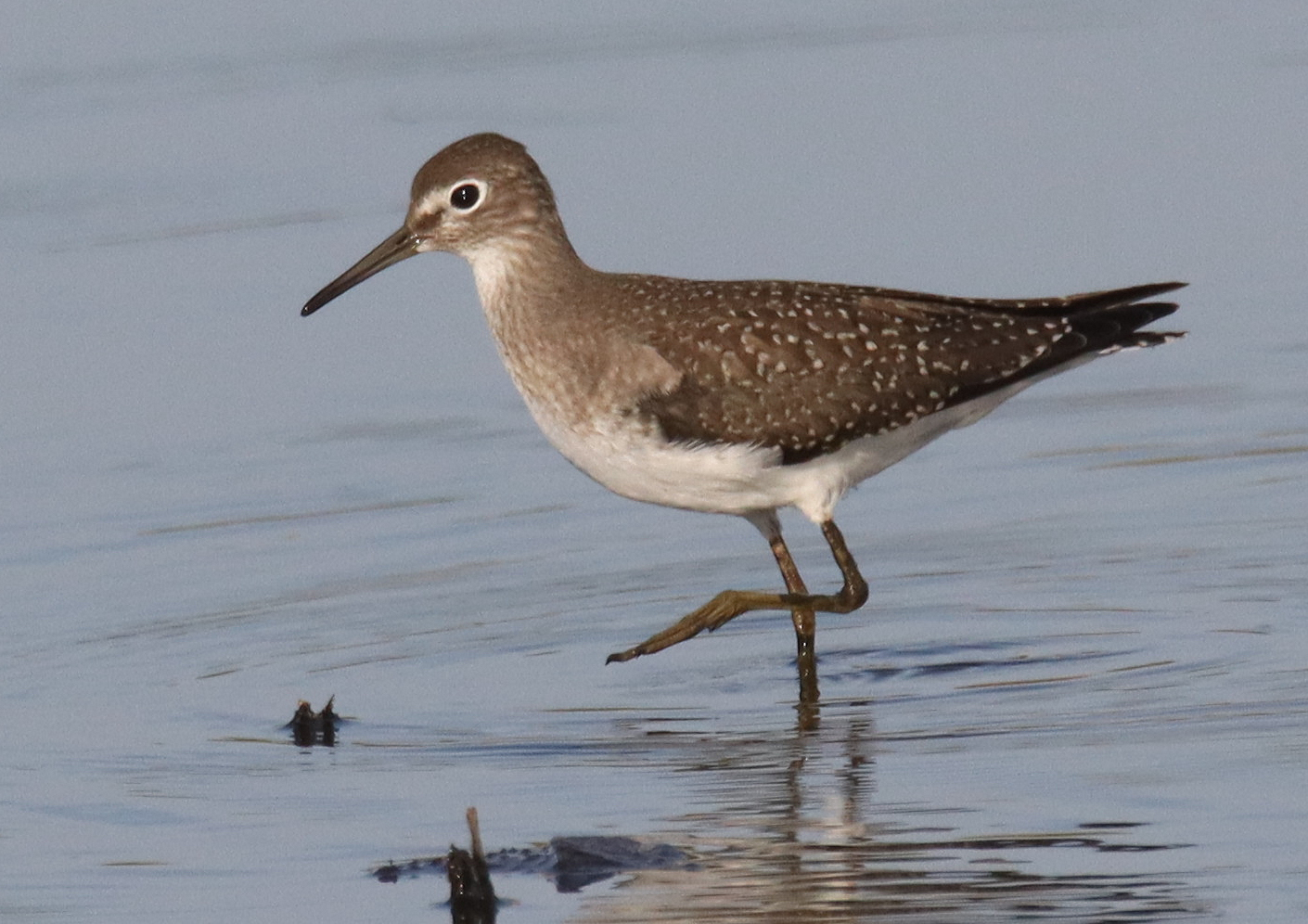
A surprise Solitary Sandpiper provided distant photos initially, but given some extra time, it foraged closer for some characteristic images.
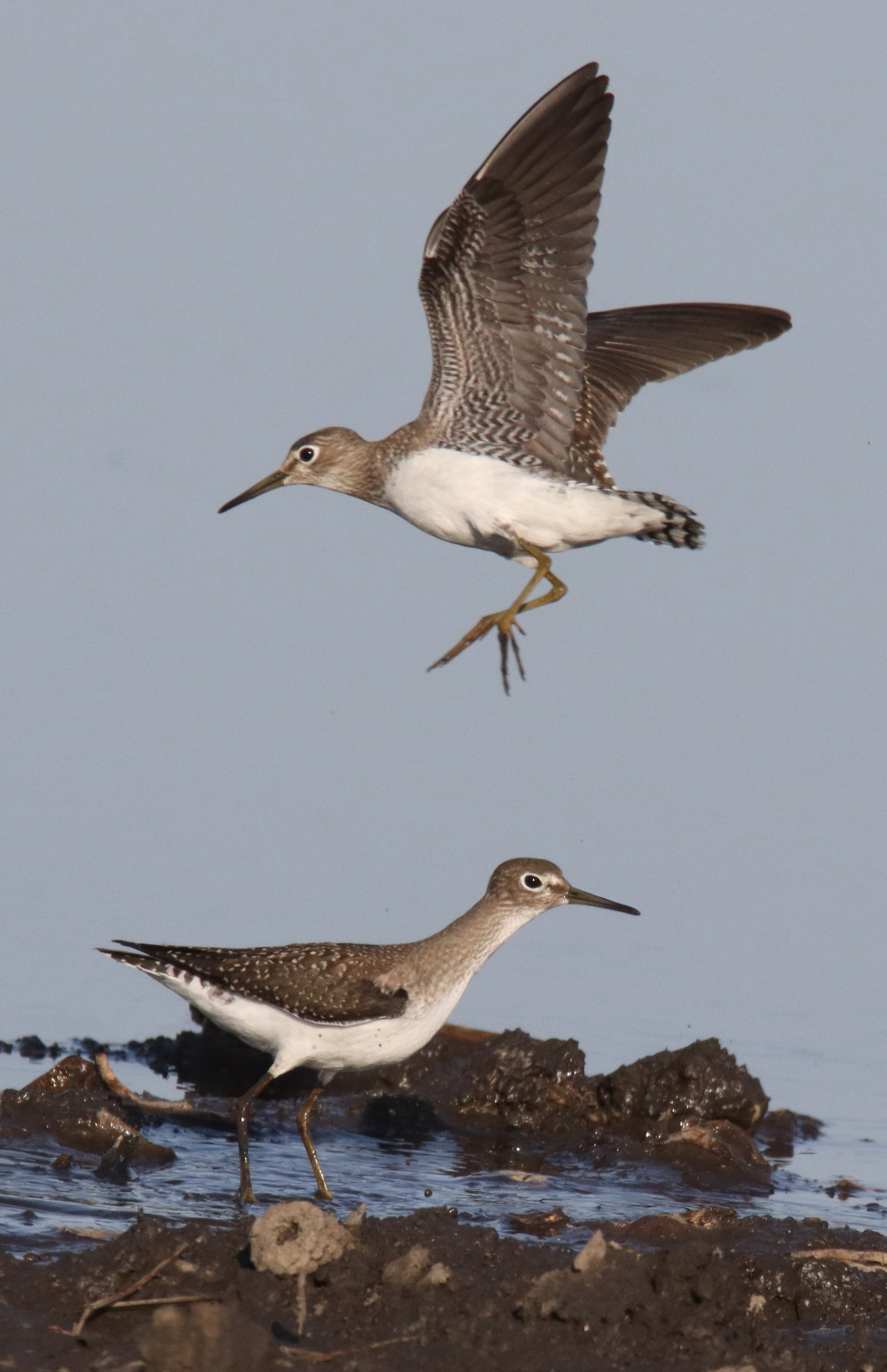
Not so solitary, a second Solitary Sandpiper suddenly appeared and began to press the first in an aggressive fashion, providing a few action photographs.
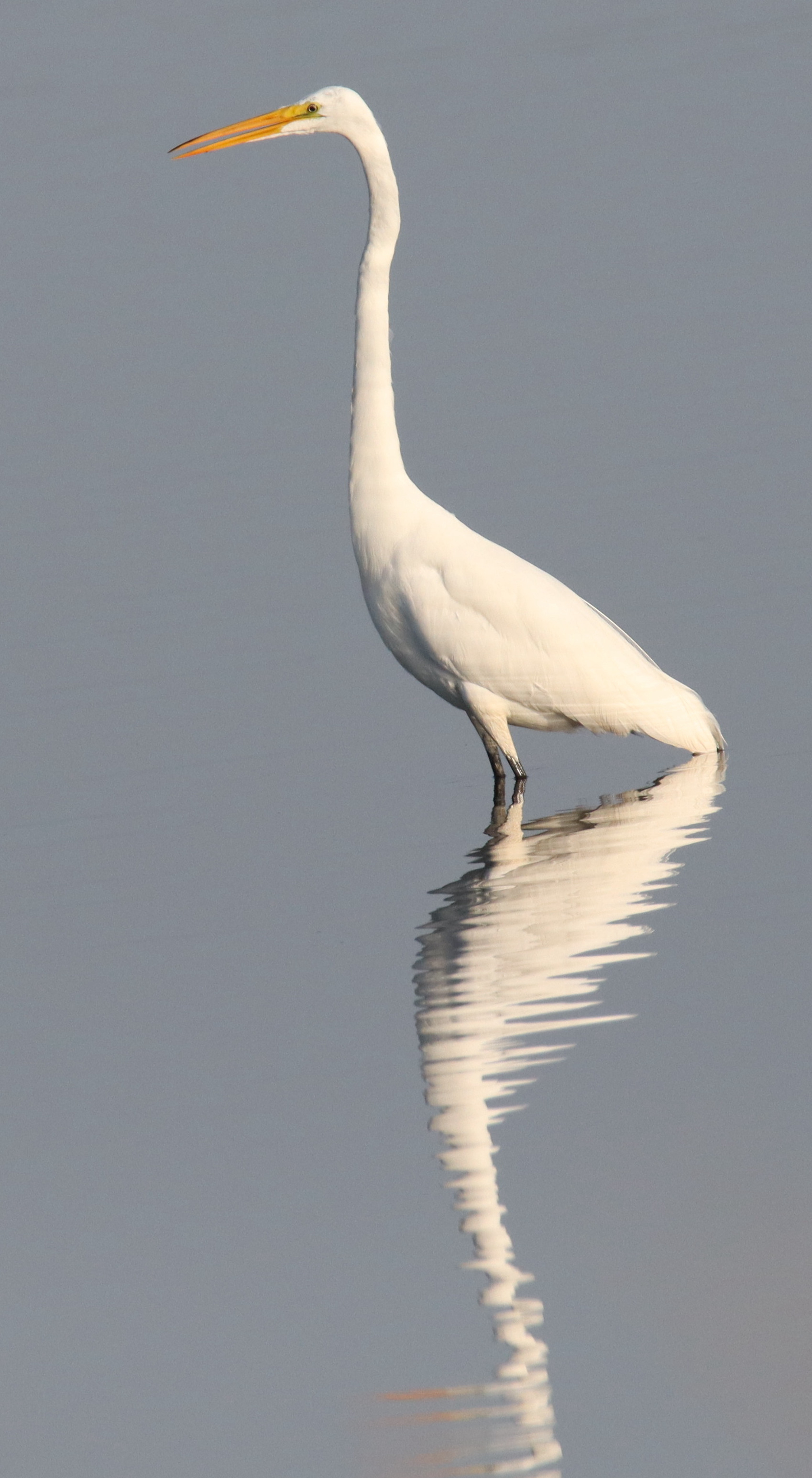
Surrounded by uniformly colored, still water, a Great Egret provided a series of photographs that illustrate this issue’s Bird Photography feature.
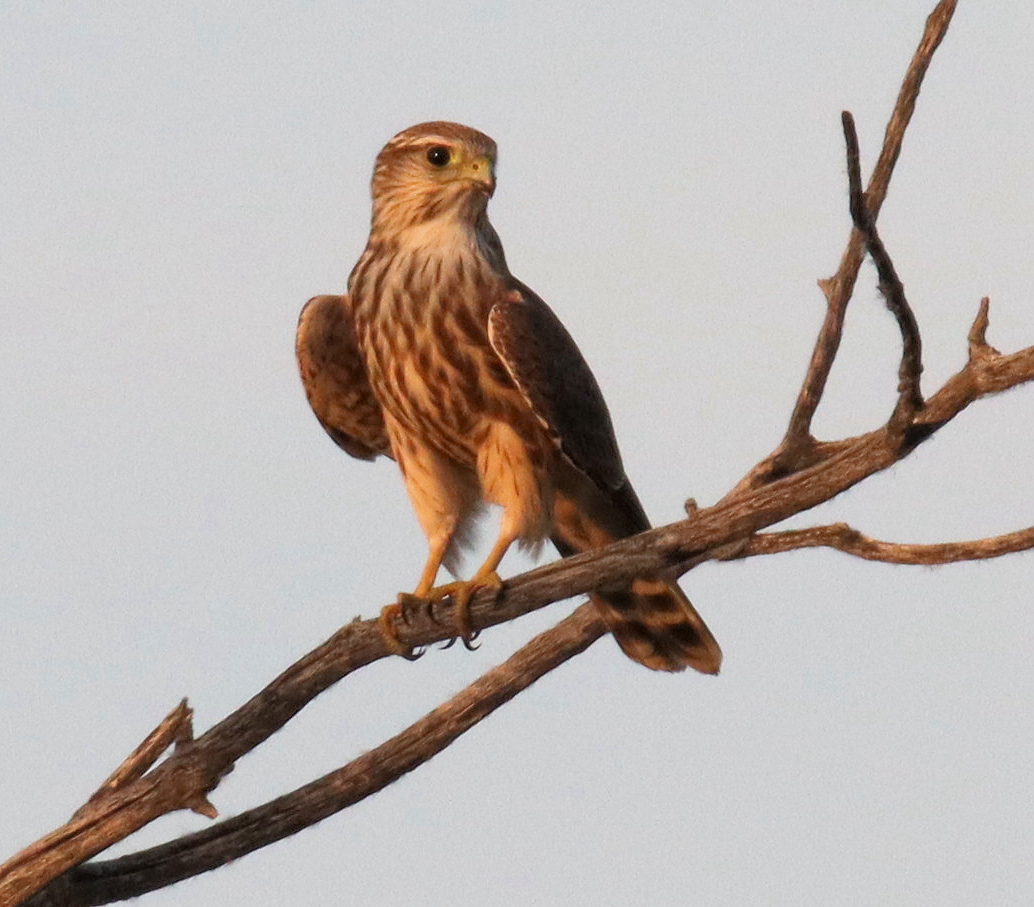
A falcon! Hoping for a Peregrine or Prairie Falcon, a sunset falcon sighting turned out to be a large Prairie Merlin, photographed in yellowing evening light.
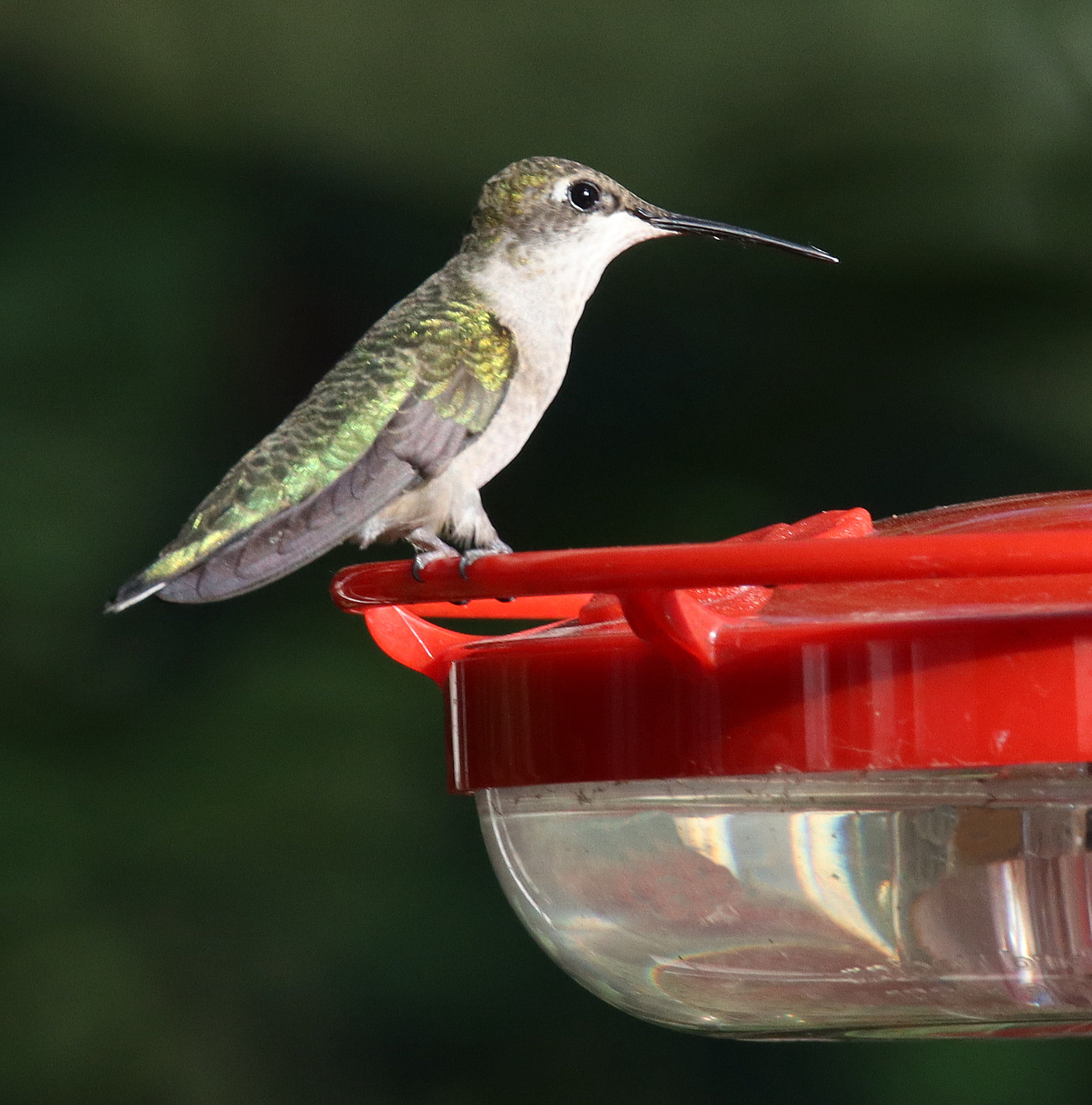
Was this the last Ruby-throated visitor of the season? No hummingbirds visited the feeder yesterday (Tuesday) before publishing this issue. Either way, it was a memorable late summer hummingbird run.
|
The biggest news from my office is that after 3 days of hosting a very rare adult male Calliope Hummingbird, the Fourth State Record of the species for the state of North Dakota, the storied mini-bird didn’t return last Wednesday or any day since. It was sure fun see the wary little Calliope and to document it with a couple photos, although good photo ops were lacking. There was a major migration predicted for Tuesday evening in the area, so I knew the little feller might continue its off-course migration, but I expect it will find its way to southwest Mexico to winter in the company of other Calliope Hummingbirds. If it flew straight south, it would reach the species’ wintering range with luck.
Earlier this week, I started my Monday birding drive by heading north 1½ miles to check on the variety of birds assembling at Alice’s Marsh, but I was short-stopped by the sight of an adult Bald Eagle flying circling low above the road ahead of me, just a mile from my office. I hoped I could get positioned where the eagle was circling, but just as I pulled up, it headed west. At Alice’s Marsh I was surprised to see 5 White-faced Ibis, now in basic plumage, along with 40ish Long-billed Dowitchers, about 80 Franklin’s Gulls, 3 White Pelicans, 1 Great Egret, and a few ducks – Mallards, Gadwalls, Green-winged Teal – and many American Coots.
The next location to check was about 15 miles south-southeast: Charo Marsh was unusually uneventful the previous afternoon, but Monday the sight of an adult Bald Eagle perched on the lone snag at mid-marsh piqued my interest level. Of course, the presence of an eagle can mean many birds have been displaced, but that didn’t seem to be the case. An obvious change from the day before was a big flock of at least 160 Killdeer, along with the usual few Lesser Yellowlegs and Greater Yellowlegs. The presence of 2 Wilson’s Snipe foraging near my parking spot provided a nice photo opportunity that held my attention a while.
There were plenty of Mallards, some Blue-winged and Green-winged Teal, and Gadwalls, but when I passed a harvested grain field to the southwest, a mixed feeding flock of about 100 Giant Canada Geese with 200 Mallards was revealing. On my way home from Charo I found a female Belted Kingfisher at the same location as the previous day, and another big flock of Giant Canada Geese, numbering about 75 was feeding in another harvested grain field, either wheat or barley.
South of the Border
By Sunday I was a little desperate for new photographs to illustrate my week of birding, and with a beautiful sunny afternoon ahead, I wanted to take a more significant birding route. Even though it eats up a lot of extra time, I decided to make a late summer run to Sand Lake National Wildlife Refuge, perhaps extending to Hecla Marsh and the State Line wetlands. Along the way, a few Swainson’s Hawks caught my attention and provided some close portraits. First a rufous-breasted adult, followed by an adult and a fledgling that provided backside details of their plumage, as well as clear views of their eyes and hooked beak – impressive raptors!
Only Red-tailed Hawks were present after I passed 2 miles east of the Coteau escarpment, and I thought the day might provide some luck to find a falcon – a big falcon – a Peregrine or Prairie Falcon; the timing was right. I did tally 5 American Kestrels, but as the last light of the setting sun beamed on a tall barkless skeleton of a tree in the midst of a dry marsh, a falcon caught my attention.
Without the aid of binoculars during my initial view, I was hopeful it was a Peregrine Falcon, perched on a backside branch of the old snag. I raised my binoculars, and darn, it was another favorite instead – a male Merlin, a member of the Prairie race, a beauty. It was possible to take a few photographs of the Merlin bathed in yellowish light, then it took flight, low as though coursing the marsh for small birds, and it vanished from sight.
Between the sightings of the early afternoon Swainson’s Hawks and the sunset Merlin, a remarkable variety of birds was present, especially at Sand Lake Refuge where large groups of White Pelicans, Double-crested Cormorants, and American Coots were dominant with impressive flocks of ducks, mostly Northern Pintails, Northern Shovelers, Gadwalls, Mallards, and Blue-winged Teal.
Scattered Western Grebes were common in one area of the refuge, and I was a bit surprised to see pairs still displaying back and forth, along with a large young Westie still food-begging from an adult. Great Egrets were widely scattered with Great Blue Herons more uncommon. One Great Egret wading through a glassy open water area provided a nice opportunity to take a series of photos that illustrate this week’s Bird Photography feature article.
East of the James River, which flows through the Sand Lake wetlands, an avian feeding frenzy was in progress with an abundance of swirling Franklin’s Gulls foraging on the wind above tall, ungrazed grasslands. The huge feeding area extended at least 2 miles long and ½ mile wide, and my impression was that the gulls were mostly feeding on large dragonflies, although I’m sure any flying bugs were pursued. There were other flocks of Franklin’s hunting on the wing thereafter, but these flocks hunted above smaller areas, measuring a few hundred yards square.
Along the way there were scattered Northern Flickers, with the largest group numbering 7, with a Downy Woodpecker foraging among them. As the sun began to reach for the horizon, Ring-necked Pheasants began showing along the roads. Sometimes I wonder about their activities after twilight. As the evening light dimmed I sighted at least 8 Common Nighthawks on the move southbound to punctuate a very eventful day for birding, and my camera’s memory card was filled with a variety of new photographs. It’s hard to beat days like that!
Neighborhood Birds
Throughout the week I enjoyed the antics of Ruby-throated Hummingbirds at my nectar feeder and occasionally gathering nectar from blooming flowers. A few Cedar Waxwings can still occasionally be seen at the mountain ash tree, the top half of which has been stripped of berries and most leaves now. I hear a passing Northern Flicker in the area some days, and a Hairy Woodpecker was present during in the tree tops one particular afternoon. Mourning Doves and American Robins continue to appear periodically, and twice I observed a feeding frenzy of Franklin’s Gulls circling above the tree tops. Once again, I encourage you to stay alert for new arrivals and different calls among your landscaping or during local walks – it’s that time of year when you never know what unusual bird might appear outside your windows or at your favorite birding hotspots. Enjoy the September birding season!
Article and Photos by Paul Konrad
Share your bird sightings and photographs at editorstbw2@gmail.com